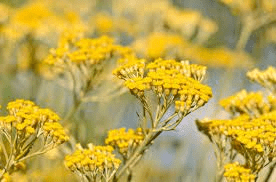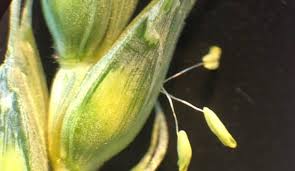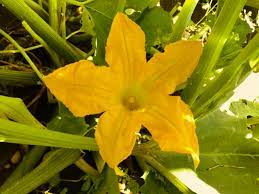The Curry Flowers: Economic Importance, Uses, and By-Products
Curry flowers, though less well-known than the leaves of the curry plant, are small, delicate blossoms that emerge from the curry leaf plant (Murraya koenigii). These flowers, typically white in color with a cluster of yellow stamens at their center, add a touch of beauty to the curry plant’s foliage. While curry flowers are not as widely used in culinary applications as the leaves, they do have some culinary and medicinal uses.
In terms of culinary uses, curry flowers are occasionally incorporated into dishes in South Asian cuisine, particularly in regions where the curry leaf plant is native. The flowers can be used as a garnish to add visual appeal to salads, rice dishes, or curries. Some chefs also experiment with using curry flowers in culinary creations to impart a subtle floral note to dishes, though this practice is less common than using the leaves or seeds of the curry plant.
Medicinally, curry flowers, like other parts of the curry plant, are believed to possess certain health benefits. In traditional medicine systems such as Ayurveda, curry flowers are sometimes used in herbal remedies for their purported anti-inflammatory and digestive properties. However, scientific research on the medicinal properties of curry flowers is limited, and further studies are needed to validate their potential health benefits.
In addition to their culinary and medicinal uses, curry flowers also play a role in the reproductive cycle of the curry plant. After flowering, the plant produces small, round fruits that turn from green to black as they ripen. These fruits contain seeds that can be harvested and planted to propagate new curry plants, ensuring the continuation of the species.
Overall, while curry flowers may not be as well-known or widely used as other parts of the curry plant, they still contribute to the plant’s overall beauty and ecosystem. Whether admired for their delicate blooms, utilized in culinary experimentation, or explored for their potential health benefits, curry flowers add another dimension to the fascinating world of the curry plant.
The Economic Importance and Uses of Curry Flowers
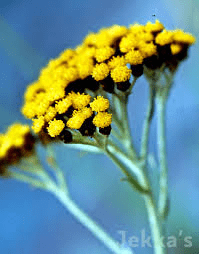
1. Culinary Applications: Curry flowers are not only visually appealing but also hold significance in culinary practices. They are often used as a decorative element in various dishes, adding a pop of color and a delicate floral aroma. Additionally, curry flowers can be infused into syrups, jams, and desserts to impart their unique flavor.
2. Herbal Remedies: In traditional medicine systems like Ayurveda, curry flowers are valued for their medicinal properties. They are believed to have antioxidant and anti-inflammatory effects, making them beneficial for health. Extracts from curry flowers are used in herbal remedies to treat ailments such as indigestion, respiratory issues, and skin conditions.
3. Aromatic Compounds: Curry flowers contain aromatic compounds that contribute to their distinctive fragrance. These compounds are extracted and used in perfumery and aromatherapy products. Curry flower essential oil is prized for its floral scent and is used in candles, soaps, and massage oils to create a calming atmosphere.
4. Culinary Garnish: Fresh curry flowers are often used as a garnish to enhance the presentation of dishes. They are delicately placed on salads, desserts, and cocktails to add an elegant touch and a burst of color. Curry flowers can also be crystallized or candied for decorative purposes.
5. Pollinator Attraction: Curry flowers play a crucial role in attracting pollinators such as bees, butterflies, and hummingbirds. Their vibrant colors and sweet fragrance attract pollinators, aiding in the pollination of surrounding plants. This contributes to the biodiversity of ecosystems and supports agricultural productivity.
6. Floral Arrangements: Curry flowers are popular choices for floral arrangements and bouquets due to their vibrant colors and unique appearance. They add a cheerful and exotic element to flower arrangements for weddings, parties, and special events. Additionally, dried curry flowers can be used in crafts and potpourri.
7. Culinary Innovation: Chefs and food enthusiasts are constantly exploring new ways to incorporate curry flowers into culinary creations. From infusing them into sauces and dressings to incorporating them into baked goods and beverages, curry flowers offer endless possibilities for culinary innovation. Their subtle flavor and floral aroma add a unique twist to dishes.
8. Traditional Rituals: In some cultures, curry flowers hold symbolic significance in traditional rituals and ceremonies. They are used in religious offerings, wedding ceremonies, and festivals as symbols of prosperity, purity, and auspiciousness. The presence of curry flowers is believed to bring blessings and good fortune.
9. Medicinal Infusions: Curry flowers can be infused into hot water to create a fragrant and soothing herbal tea. This infusion is believed to have calming and digestive properties, making it a popular choice for relaxation and wellness. Curry flower tea is often enjoyed on its own or with added herbs and spices.
10. Floral Extracts: The aromatic essence of curry flowers can be extracted and used in cosmetic and skincare products. Curry flower extracts are incorporated into perfumes, lotions, and creams for their floral fragrance and potential skin benefits. They add a touch of luxury and indulgence to beauty products.
11. Sustainable Agriculture: The cultivation of curry flowers promotes sustainable agriculture practices and biodiversity conservation. Farmers who grow curry flowers often adopt organic farming methods and prioritize soil health and biodiversity. By supporting sustainable agriculture, the economic importance of curry flowers extends to environmental conservation.
12. Culinary Tourism: In regions where curry flowers are abundant, culinary tourism thrives as visitors explore local cuisine and culinary traditions. Food tours, cooking classes, and culinary festivals showcase the versatility of curry flowers and their use in traditional and modern dishes. Culinary tourism contributes to economic growth and cultural exchange.
13. Floral Preservation: Curry flowers can be preserved through drying and pressing, allowing them to be used in crafts and decorative arts. Dried curry flowers retain their vibrant colors and can be used in greeting cards, bookmarks, and framed artwork. They add a touch of nature and beauty to handmade creations.
14. Flavor Infusions: Curry flowers can be infused into various culinary ingredients to impart their floral flavor. Infusing cream, butter, or vinegar with curry flowers adds a delicate floral essence to dishes such as sauces, dressings, and desserts. This infusion technique enhances the flavor profile of dishes and creates a unique culinary experience.
15. Botanical Gardens: Curry flowers are showcased in botanical gardens and arboretums around the world for their beauty and botanical significance. These gardens provide opportunities for visitors to admire and learn about curry flowers and their role in ecosystems. Educational programs and guided tours enhance public appreciation for curry flowers and botanical diversity.
16. Floral Photography: Photographers often capture the beauty of curry flowers in stunning floral photography. Their vibrant colors, intricate details, and graceful shapes make them captivating subjects for artistic expression. Curry flower photography is popular in fine art, nature, and botanical photography genres, showcasing the allure of these exotic blooms.
Read Also: 10 Medicinal Health Benefits Of Banisteriopsis caapi (Ayahuasca)
The Products and By-products That Can Be Derived From Curry Flowers

1. Curry Flower Tea: Curry flower tea is a soothing herbal infusion made by steeping dried curry flowers in hot water. It offers a delicate floral flavor and is believed to have calming properties, making it a popular choice for relaxation and wellness.
2. Floral Extracts: Essential oils and floral extracts can be derived from curry flowers through steam distillation or solvent extraction processes. These extracts are used in perfumery, aromatherapy, and skincare products for their aromatic and therapeutic properties.
3. Culinary Garnish: Fresh curry flowers can be used as a decorative garnish in culinary applications. They add a vibrant pop of color and a subtle floral aroma to dishes such as salads, desserts, and beverages.
4. Herbal Remedies: In traditional medicine systems, curry flowers are valued for their medicinal properties. They are used in herbal remedies to treat various ailments such as indigestion, respiratory issues, and skin conditions.
5. Potpourri: Dried curry flowers can be used in potpourri blends to add a natural fragrance to indoor spaces. They are often combined with other dried flowers, herbs, and spices to create aromatic mixtures for home décor.
6. Floral Infusions: Curry flowers can be infused into various culinary ingredients such as honey, vinegar, and oil. These infusions capture the delicate floral flavor of the flowers and can be used to enhance the taste of dishes or as gourmet condiments.
7. Floral Water: Hydrosols or floral waters are by-products of the steam distillation process used to extract essential oils from curry flowers. These aromatic waters have skincare benefits and can be used as natural toners, facial mists, and body sprays.
8. Botanical Art: Curry flowers inspire botanical artists and illustrators to create intricate drawings and paintings. Their vibrant colors and unique shapes make them captivating subjects for botanical art, which is often used in botanical publications, educational materials, and home décor.
9. Floral Jewelry: Dried curry flowers can be preserved and used to make floral jewelry such as necklaces, earrings, and bracelets. These delicate accessories are popular for weddings, festivals, and other special occasions, adding a touch of natural beauty to outfits.
10. Floral Soap: Soap makers incorporate curry flower extract or dried petals into their formulations to create floral-scented soaps. These aromatic soaps offer a luxurious bathing experience and are favored for their natural fragrance and skincare benefits.
11. Pottery Decoration: Dried curry flowers can be pressed into clay to create botanical impressions on pottery and ceramics. This decorative technique adds texture and visual interest to handmade pottery pieces, making them unique and visually appealing.
12. Floral Candles: Curry flower essential oil or dried petals can be used to scent candles, adding a subtle floral fragrance to indoor spaces. Floral candles are popular for aromatherapy, relaxation, and creating a cozy ambiance at home.
13. Floral Confections: Curry flowers can be crystallized or candied to create decorative confections for cakes, pastries, and desserts. These sweet treats add a touch of elegance and floral flavor to baked goods, making them ideal for special occasions.
14. Floral Vinegar: Vinegar infused with curry flowers offers a delicate floral flavor and aroma, making it a gourmet ingredient for salad dressings, marinades, and sauces. Floral vinegar adds a unique twist to culinary creations and is prized for its subtle floral notes.
15. Floral Honey: Bees that forage on curry flowers produce a delicate floral honey with hints of the flower’s aroma and flavor. Floral honey is sought after for its unique taste and can be enjoyed on its own or used as a sweetener in teas, desserts, and baked goods.
16. Floral Liqueurs: Curry flowers can be infused into spirits such as vodka, gin, or rum to create floral liqueurs with a subtle floral aroma and flavor. These floral-infused spirits are used in cocktails and mixed drinks to add a sophisticated touch to beverages.
17. Floral Bath Salts: Dried curry flowers can be combined with Epsom salt or sea salt to create aromatic bath salts. Floral bath salts offer a luxurious bathing experience and are prized for their natural fragrance and skin-soothing properties.
18. Floral Skincare Products: Cosmetic manufacturers incorporate curry flower extract or essential oil into skincare products such as lotions, creams, and serums. These floral-infused skincare products offer hydration, nourishment, and aromatherapy benefits for the skin.
Read Also: Apple Maggot: Description, Damages Caused, Control and Preventive Measures
Frequently Asked Questions (FAQ’s) About Curry Flowers
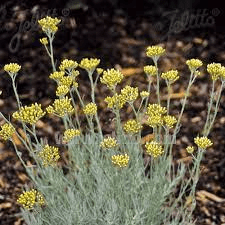
1. What Are Curry Flowers?
Curry flowers are the blossoms of the curry leaf tree (Murraya koenigii), which is native to South Asia. These flowers are small and delicate, with white petals and a sweet fragrance. While the curry leaf tree is best known for its aromatic leaves used in cooking, the flowers also hold significance in culinary, medicinal, and cultural practices.
2. How Are Curry Flowers Used in Cooking?
In culinary applications, curry flowers are primarily used as a decorative garnish to add visual appeal and a subtle floral aroma to dishes. They are delicately placed on salads, desserts, and beverages to enhance presentation and provide a touch of elegance. Additionally, curry flower petals can be infused into syrups, sauces, and desserts to impart their unique flavor.
3. What Are the Health Benefits of Curry Flowers?
Curry flowers are believed to have antioxidant properties and may offer health benefits when consumed. While scientific research on the specific health effects of curry flowers is limited, they are commonly used in traditional medicine systems such as Ayurveda for their potential medicinal properties. Extracts from curry flowers are used in herbal remedies to treat various ailments.
4. Can Curry Flowers Be Eaten?
While curry flowers are edible, they are primarily used as a decorative element in culinary applications rather than as a primary ingredient. The delicate petals of curry flowers can be consumed along with the dish they garnish, adding a subtle floral flavor and aroma. However, it is essential to ensure that curry flowers are sourced from safe and pesticide-free sources before consumption.
5. How Are Curry Flowers Harvested?
Curry flowers are typically harvested by hand when they are in full bloom. Farmers carefully select mature flowers from the curry leaf tree, ensuring that the petals are intact and free from damage. Harvested curry flowers are then sorted, cleaned, and prepared for culinary or decorative use.
6. Can Curry Flowers Be Dried or Preserved?
Yes, curry flowers can be dried or preserved for extended use in culinary and decorative applications. Dried curry flowers retain their color and fragrance, making them suitable for use in potpourri, floral arrangements, and crafts. To dry curry flowers, they are typically hung upside down in a well-ventilated area until fully dehydrated.
7. Where Can I Find Curry Flowers?
Curry flowers are commonly found in regions where the curry leaf tree grows, particularly in South Asia. They are often available at local markets, specialty grocery stores, and online retailers that specialize in culinary herbs and spices. Fresh curry flowers may be seasonal, so availability may vary depending on the time of year and location.
Read Also: How to Start an Urban Farm

